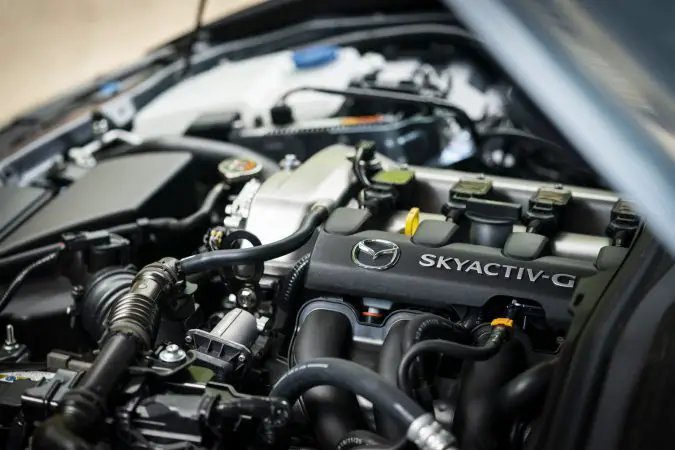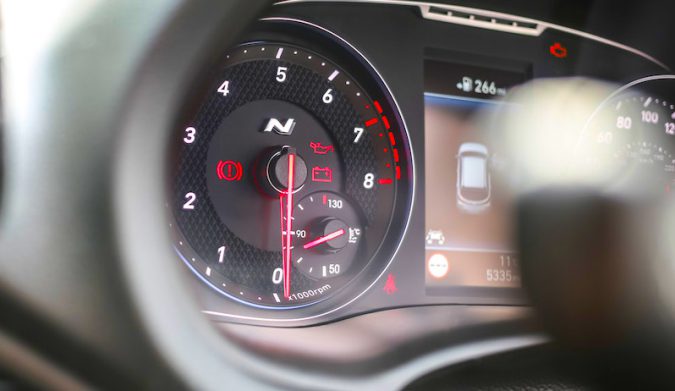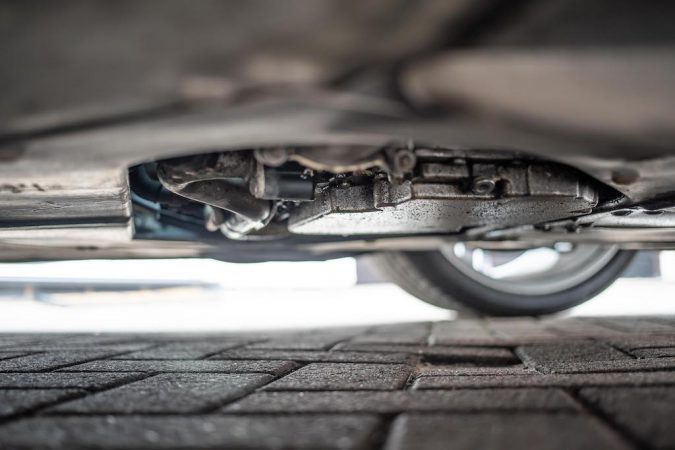Driving a vehicle with low coolant is easily one of the easiest mistakes any vehicle owner can make. Coolant is a vital element in the intricate mechanical environment of a car. Ignoring this can have devastating effects. Easy to go wrong but easier to get it right. In this story, we shall poke our heads deep into the engine bay to learn more about this bright fluid.
What Does A Cooling System Do?
The cooling system of an engine plays a key role in keeping the operation of the engine efficient. Engine temperatures can soar up to hundreds of Fahrenheits. The cooling helps in keeping the internals of the engine operating at optimal temperatures.
Though coolant-based cooling systems are more prevalent in modern-day automobiles, it is not the only type. There are two main kinds of cooling systems used in vehicles.
Air Cooling System
These were used by many cars in the past, but it may be hard to find one in a modern four-wheeler. Though it can be found in some vehicles including a few Tatra trucks, it is no longer as common as it once was. It is currently kept alive by many motorcycles and some piston-engine aircraft. Air cooling is a simple method to cool an engine, but it is also the least efficient. Nevertheless, this did not stop people from loving it.
When Porsche switched their iconic 911 sports car from air cooling to liquid cooling in 1998, the purist 911 fans were angry. They claimed that this was the death of the ‘true’ 911. But what was so special about air cooling that the departure of which attracted so much wrath?
Air-cooled engines use no coolant, hence there is no issue of running on low coolant. Instead, air-cooled engines use heat dissipation surfaces to radiate heat into the atmosphere. This keeps them cool. Though not as efficient as the modern water-cooled engines, these engines were loved by many. Mostly for its unique character, built around its thrummy note, old-school appeal, and simple construction.
Porsche’s radical departure from air-cooled engines to water-cooled engines was criticized by a lot of fans. But the sales charts did not reflect the same sentiment, with the 996 generation of the 911 sold in huge numbers. The air-cooled engine has already been milked to the max, to keep it relevant amid constricting emission and efficiency requirements.
The water-cooled engine was more efficient as it could check the temperatures more easily. But this came with more complexity, and of course, the possibility of having troubles with low coolant levels.
Liquid Cooling
As automobiles kept changing, cooling technologies needed a revamp as well. Modern engines are forever pushed to make more power while sipping less fuel. But these engines run the risk of overheating as they operate at very high temperatures. A liquid cooling system is just what they need as it could take heat away from the engine better than any air-cooling system could.
The water cooling/liquid cooling system uses water, or in modern cars, a coolant to cool the engine. Water/coolant is stored in a reservoir and is pumped through safe passages inside the engine, taking heat away from it.
Parts Of A Liquid-Cooling System
A water-cooling system is operated with the following parts
Reservoir
The reservoir is where the coolant is stored. This is where most of the coolant rest after the engine has been switched off. Low coolant levels can be caused by leaks in the reservoir. This can be diagnosed here.
Water Pump
As the name suggests, this part of the cooling system is responsible for pumping the coolant. The pump is driven by the serpentine belt that also drives the alternator, power steering pump, and AC compressor.
Temperature Sensor
Coolant temperature is a parameter that needs constant monitoring. The temperature sensor measures this and constantly adjusts the system to combat any sudden rise.
Radiator
It is a heat exchanging system that has many passages through which the hot coolant flows. The thin fins on these passages release the heat from the coolant to the ambient air. When an engine has reached the optimum working temperature, the coolant from the radiator flows into the engine. They flow through the safe passages, reducing the temperature.
The role played by the radiator is very crucial in the smooth operation of the cooling system. So, it should not be surprising that it can get decently expensive to replace if gone wrong.
Radiator Fan
If an undesirable rise in coolant temperature is detected by the coolant temperature sensor, the radiator fan kicks in. The fan aids the radiator in taking the heat away from the hot coolant quickly.
The radiator fan can go wrong in an engine due to many reasons. You can read about them here.
Radiator Pressure Cap
Seemingly a simple part of the system, but the pressure cap does a lot more than its small size suggests. The heating up of the fluid can increase pressure inside the system. This pressure build-up can easily damage the whole network. Here, the pressure cap comes to the rescue.
The pressure cap has a spring-operated valve that opens after a certain pressure. This leads the coolant to flow into the reservoir, helping to maintain the pressure.
Thermostat
During a cold start, the first priority of the engine is to heat up to its optimum working temperature. But an efficient cooling system can delay it. This is where the thermostat comes in.
When the engine is cold, the thermostat opens a bypass valve, allowing the coolant to bypass the radiator. This reduces the cooling efficiency and allows the engine to heat up quickly. But once the optimum temperatures are achieved, the thermostat closes the bypass valve. Simultaneously, the thermostat opens the main valve that allows coolant to flow into the radiator.
This kick starts the cooling cycle of the engine and helps it maintain its optimum working temperature.
Car Heater system
Though technically not intended to keep the engine cool, the heater system of the car does essentially the same work as a radiator. The heater core is similar in construction to that of a radiator, with channels for coolant flow. The heat dissipated from the heater core is pumped into the cabin using a blower.
What Are The Properties Of A Coolant?
If you have been around people who drive a car, you must have seen at least some of them filling their radiators with water. Water is considered to be a good coolant for ages due to its brilliant capability to carry heat away. But regular tap water poured into an engine can be detrimental to its health in the long run.
Tap water can leave behind minerals inside the radiator or engine as it evaporates. This can lead to serious damage and expensive repairs. Using distilled water can be an alternative. This will not leave minerals behind, but rust is still a risk. This is where modern coolants come in.
Ideally, a coolant should have low viscosity and higher thermal efficiency. Lower cost and a chemically inert nature are added bonuses. Moreover, a coolant should also be able to hold on to its properties over a wide temperature range. It should not boil away while operating in extremely hot climates. It should also not freeze in a colder area. The latter of these requirements adds another compound to the mix, anti-freeze.
The name anti-freeze comes from the compounds added to water to lower its freezing point (to learn more about how this works, check out our guide on does oil freeze). In cold areas, water used in radiators will freeze, and render the engine unable to run properly. In olden times, alcohol used to be a popular anti-freeze. This works well during winters of course. But in summers, the alcohol evaporates away, leaving the engine behind with a reduced capacity to cool itself. Modern anti-freeze compounds combat this rather brilliantly.
What Happens When You Drive With Low Coolant?
If you did not catch from the name, the coolant is the main carrier of heat from an engine. In liquid-cooled systems, coolant is employed to gush through the dedicated routes inside the engine. This movement helps the engine give up heat quickly, while the coolant takes it away. With low coolant levels, the damage is self-explanatory.
Running your car with a low coolant can be a costly error as it can take your wallet for a wild ride. Low coolant levels in a cooling system can render it useless to combat engine overheating. Let us look at what driving with low coolant does to a vehicle.
Engine Overheating
This needs no explanation. If low coolant levels persist in your cooling system, the engine will not have anything to keep its temperature checked. As a result, it overheats. Every damage associated with an overheated engine can be expected in this situation, including a blown head gasket or even worse, pistons welding onto the cylinders.
Blown Head Gasket
This is an aftermath of an overheated engine. Low coolant levels can allow the heat inside an engine to skyrocket. The head gasket bears the brunt of this mistake. If a head gasket has blown, you may see bubbles in the radiator, a frothy deposit under the oil filler cap, or white smoke coming from your tailpipe. If you are interested in learning more about this issue, you can read all about it here.
Car Shuts Off
Most modern cars come with an array of sensors that detect any undesirable variations in its operating parameters before it causes any damage. Similarly, some cars detect low coolant levels and shut the engine off before it suffers any damage. This can save you from spending thousands of dollars on fixing a broken engine.
Damaged Water Pump
The water pump is responsible for the circulation of coolant through the entire system. The water pump, in return, uses the coolant to protect itself from failure. The fast-spinning water pump can suffer from damaged seals and bearings if it does not have enough coolant in it.
Malfunctioning AC System
As we explained a little early, the heater core of the air conditioning is connected to the cooling system. If there is low coolant, this may not function properly, and you can detect a malfunction in the air conditioning operation. An AC malfunction can also mean other things, so a handy guide can help in diagnosing the problem more accurately.
How Do You Know If You Have Low Coolant?
Most cars have systems that alert the driver if their vehicle is running low on coolant. This may include warning lights, audible messages, or warning text on any of the vehicle’s screens.
But there are many other signals that the vehicle provides hinting at low coolant levels. Some of them can be sensed early into the problem. But some can take a while to show up. Let us look at these signs so that you can be prepared if your coolant runs low.
Low Coolant Warning Light
This is easily the most straightforward sign that alerts the driver of low coolant levels. It can be accompanied by a warning message that prompts the driver to add more coolant. The warning light may show the icon of a thermometer dipped in a fluid. I some vehicles, it may also depict the icon of a tank with low fluid in it.
Whichever the icon is, the low coolant warning light means the same thing. Pull over, let your vehicle cool down completely, and fill the reservoir tank or radiator in with the correct coolant, as specified by the manufacturer.
Temperature Gauge Shooting Up
As the engine temperature shoots up when there is low coolant, the gauge to measure it shoots up as well. The temperature gauge in a vehicle should show an optimum reading. It can be somewhere near or lower than the middle of the scale. Anything above this can be considered an anomaly, and inevitably a red flag.
If the temperature reading creeps up even higher, it can mean that the engine is in danger of breaking down. When your vehicle reads an improper temperature, stop the vehicle immediately. Driving it anymore is irresponsible and can have catastrophic results.
A hot engine can also be due to other parameters like low engine oil. So always diagnose the issue to pinpoint what went wrong. But do not try to open the radiator pressure cap while the engine is still hot. It can splash hot coolant out and can burn your skin. So let your engine cool down, preferably overnight, before you check the coolant level in your radiator. Most coolant reservoir tanks are translucent. In most cases, a glance at the optimum level markings is enough to spot a low coolant level.
Sweet Odor
The anti-freeze in your vehicle contains glycol, a sweet-smelling substance. If the low coolant levels are caused by a leak, this smell can seep into the cabin. Your nose will pick this up, informing you about a leak and possible low coolant levels.
Coolant Leaks Under The Car
Quite obvious, and the easiest way to spot a leak. If your vehicle is leaking coolant from any part of its circulation system, you can find it puddling under the vehicle after being parked for a while. The brightly colored fluid is easy to spot but make sure you get to it before your pets do. The sweet odor of the anti-freeze can attract your pets, but the coolant can be lethal to them. If taken in, the coolant can make them sick, and in many cases, even kill them.
What Can Cause Low Coolant Levels?
The most common cause for low coolant levels is coolant leaks. In a closed apparatus like the cooling system, there is almost no reason for low coolant, other than a leak. In case you find that your vehicle is leaking coolant, consult your trusted mechanic to diagnose the issue.
The leaks in a cooling system can come from different areas of its system
External Leaks
This is one of the most common areas from where the coolant can leak out. The external system of the cooling system includes everything apart from the engine. The major external components that can leak coolant includes
Radiator Hoses
The radiator hoses are made of rubber. Rubber, as we know, can get brittle with age. With the high pressure building up inside them, they can crack at some point. The coolant can gush out of this crack, triggering the low coolant level light. Silicon hoses can counter this to some extent but these too may fail after a while.
Hose Connections
The areas where the hoses connect the main parts of the cooling system are also prone to the same damage. Here the fasteners can give up too, loosening up the connection. A classic recipe for leaks.
Water Pump
A faulty water pump is not a very common occurrence in a cooling system. But if the water pump is to go wrong, it can cause coolant leaks. Replacing a water pump is a costly affair, especially due to the intensive labor the procedure demands. But this is a problem that occurs mostly in very old vehicles with high mileage.
Radiator Leaks
Leaks can happen from the radiator itself. In older cars, corrosion can cause the radiator to develop leaks, leading to low coolant levels. If your car has been in a collision, you run the risk of cracks in the radiator, another recipe for leaks
Heater Core leaks
As the heater core of an engine shares the same basic design as the radiator, it gets the same issues. Both the radiator and heater core needs replacement if damaged, and this has to be done by a trained professional.
Radiator Cap leaks
The radiator cap is responsible for maintaining the pressure in the system. It releases the pressure in the whole system if it is found to be too high. It has a valve that routes coolant into the reservoir if the pressure goes beyond a certain value. A failed radiator cap can hinder this operation, causing a leak, and low coolant levels.
The radiator cap can get stuck, with the valve unable to open and release the high pressure. This can put a lot of stress on the hoses and clamps, leading to their failure. On the other side, if the radiator cap can be too liberal with the release of pressure. This can flow coolant into the reservoir at a rate higher than normal, overflowing it.
Replacing a radiator cap is a fairly simple process. A new cap will not set you back by more than $7 to $20. But, finding the right cap for your vehicle is important. If you are unsure, seek the help of a mechanic who can guide you right. But never open the cap when the engine is hot.
Low Coolant Due To Reservoir Leak
The low coolant levels in a cooling system can be due to a leak from the area where the coolant collects. The reservoir can develop leaks over time so if you see coolant leaking, get the reservoir replaced. This will need the help of a mechanic.
If you choose to do it yourself, this video guide can help.
Internal Leaks
Now we have reached the serious end of things. The internal leaks mean way more damage than any external damage. These need the engine to be opened to repair, which is a costly affair
Damaged Head Gasket
Low coolant levels may also be caused by a failed head gasket that can leak coolant into the engine. The gasket forms a seal that keeps the coolant out and keeps the oil in. But if coolants make it into the combustion chamber and burn, it can be catastrophic to the engine. This problem needs immediate attention and repair by an experienced Greasemonkey. Meanwhile, this guide can help you learn more about head gaskets and how they fail.
If that does not give you an idea about the complexity of the job, this video can.
Worn Out Intake Manifold gasket
Yet another gasket that can leak coolant in your car is the intake manifold. But thankfully, this low coolant issue is not as costly to repair as a blown head gasket.
Faulty Sensors
The coolant level is measured by a sensor that can trigger the warning light if it finds out low coolant. No leaks, and a well-maintained coolant level but a warning light can mean that the sensor has gone kaput. You will need to replace it in a garage.
Can I Drive With A Low Coolant?
The short answer is no. Driving with low coolant is an irresponsible act that can cost your engine’s life. Low coolant can mean anywhere from a small leak in a tiny hose somewhere in the engine bay or disastrous damage to the head gasket. The best thing to do at this point is to stop the vehicle, let it cool down, and check for leaks. If unable to spot the leak, tow it to the nearest garage and get the inspection and repairs done.
Effects of Low Coolant in Cars
- Antifreeze or engine coolant helps manage the heat produced by gasoline engines, diesel engines, hybrid vehicles, and electric cars.
- Low coolant levels can cause engine overheating, which can lead to permanent damage such as pistons welding to the cylinders.
- A blown head gasket is a common problem resulting from low coolant levels.
- Low coolant levels can cause some cars to shut off automatically due to a safety system that prevents significant engine damage.
- Symptoms of low coolant include the high-temperature gauge near or in the red, a malfunctioning A/C system, and a sweet-smelling odor.
- Low coolant can be caused by external leaks, radiator cap leaks, or internal leaks such as from the engine’s head gasket.
- Low coolant symptoms can vary, but most vehicles have an antifreeze light or a “Check Coolant” message on the dashboard.
- If the temperature gauge is close to the H symbol, the engine should be shut down, and a technician should be contacted for repairs.
- Hot air from A/C vents during the winter can indicate low coolant levels.
- A faulty coolant level sensor may illuminate the coolant light even if antifreeze levels are not low.





